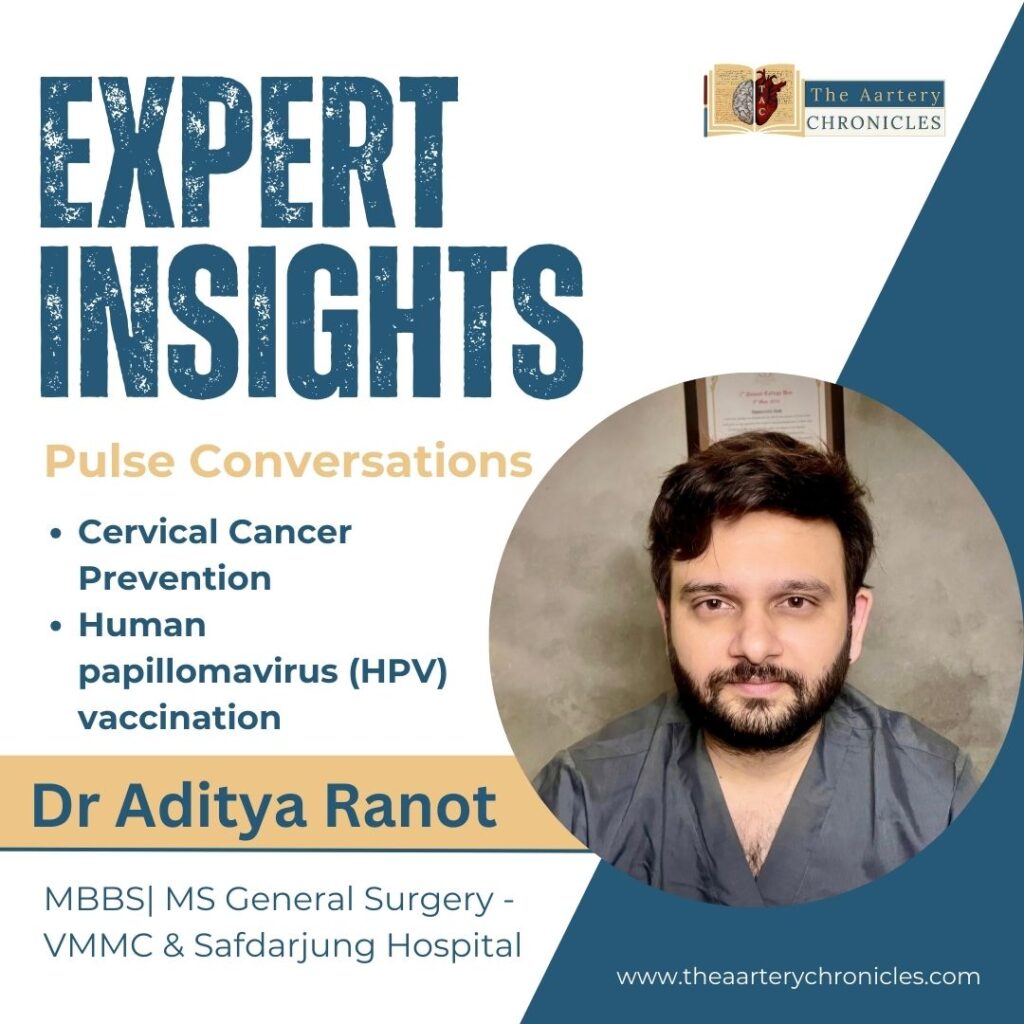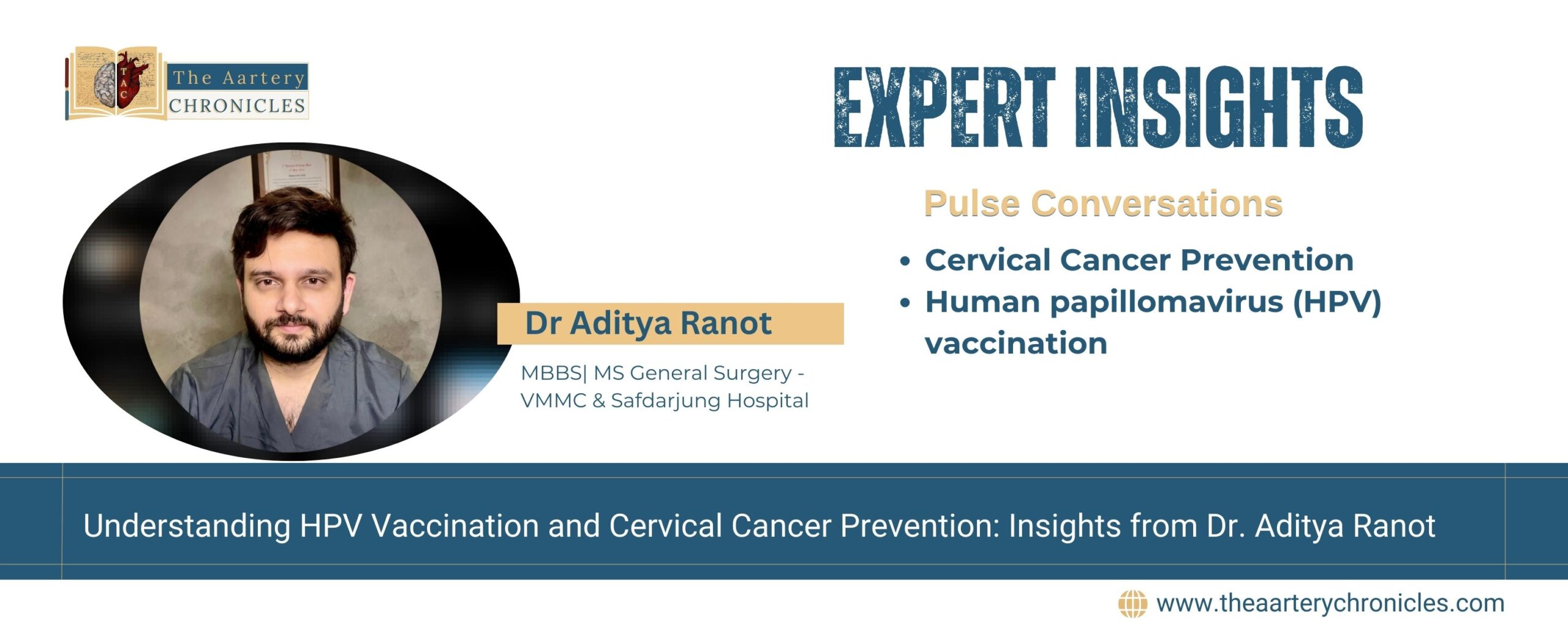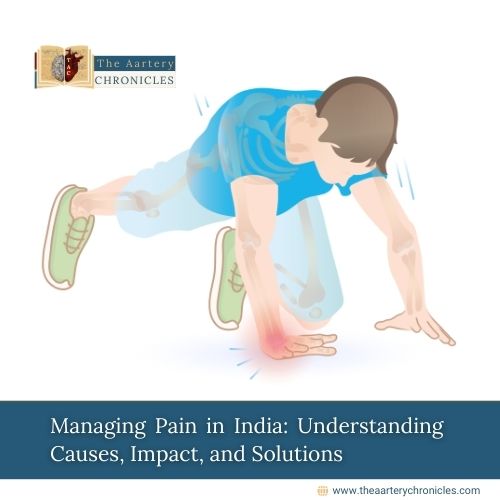

Understanding HPV Vaccination and Cervical Cancer Prevention: Expert Insights from Dr. Aditya Ranot
Overview
Cervical cancer remains a significant health concern, particularly in India, where awareness and access to preventive measures are still growing. Dr. Aditya Ranot, a specialist in the field, provides essential insights into HPV vaccination and the importance of screening for cervical cancer. Here, we summarize key points from Dr. Ranot’s discussion on HPV vaccination, screening protocols, and broader cancer awareness.
The Role of HPV in Cervical Cancer
In a recent discussion, Dr. Aditya Ranot, a distinguished surgical oncologist, at VMMC and Safdarjung Hospital explains that HPV is a group of viruses, with strains 16 and 18 being the most commonly associated with high-risk cases of cervical cancer. Other strains, such as 6 and 11, are categorized as low-risk and are primarily linked to conditions like genital and anal warts, which can also be spread by HPV but do not cause cervical cancer.
Available HPV Vaccines in India
Dr. Ranot explains that there are several HPV vaccines available in India, each designed to protect against various strains of the virus:
1. Cervavac:
Cervavac is a locally produced, quadrivalent vaccine, and it is effective against four high risk HPV strains (16, 18, 31, and 33). It is the most affordable option in India, making it a practical choice for widespread immunization efforts.
2.Gardasil:
Similar to Cervavac, Gardasil is another quadrivalent vaccine that is effective against the same four HPV strains: 16, 18, 31, and 33. It is slightly more expensive than Cervavac but remains a common option for protecting against high-risk HPV strains.
3.Gardasil 9:
This vaccine covers seven high-risk strains and two low-risk strains of HPV, but it is the most expensive option, costing around INR 10,000. Due to its high cost and additional protection against low-risk strains (which primarily cause conditions like genital and anal warts), it is less commonly used in India.
Dr. Ranot further clarifies a common misconception about HPV vaccines, stating that these vaccines do not contain the live virus but rather virus-like particles (VLPs). These particles mimic the virus to stimulate the immune system without causing infection, making vaccination safe and effective.
Availability of HPV Vaccines in Government Hospitals
Dr. Aditya Ranot explained that while there have been some efforts to provide free vaccines in government hospitals and schools, such as in Pune, this initiative is not yet widespread across the entire country.
Following the recent budget announcement, Finance Minister Nirmala Sitharaman indicated plans to expand vaccination availability. However, this expansion has yet to be fully implemented, and free vaccinations are currently available only in select locations like Delhi, Punjab, West Bengal, Sikkim, and Manipur. The extent of availability even in these states varies, and it’s clear that not all government hospitals provide these vaccines without cost.
For those unable to find vaccines in government hospitals, the alternative is to seek them in private healthcare facilities, where they may have to pay out of pocket. This gap in availability and awareness particularly affects rural areas, where people may not be informed about the costs or the importance of vaccination, leading to lower usage rates.
Importance of Regular Screening for Cervical Cancer
In addition to vaccination, regular screening is crucial in the early detection and prevention of cervical cancer. In our country, cervical cancer screening begins at age 25 for women with no known risk factors. It involves two primary methods: pap smears and HPV DNA testing. These tests are essential for early detection and prevention of cervical cancer.
Dr. Ranot outlines the screening recommendations in India:
1.Pap Smear Guidelines:
Pap smear screening is recommended every three years, starting at age 25. A Pap smear involves collecting cells from the cervix to look for abnormalities that could indicate cervical dysplasia or cancer.
2.HPV DNA Testing: Starting at age 30, HPV DNA testing is recommended every five years. This test detects the presence of high-risk HPV strains in cervical cells.
Special Considerations
- HIV Positive Individuals: For those with HIV, HPV DNA testing starts at age 25 instead of 30, and the frequency may be adjusted based on individual health conditions.
- Family History: While a family history of cervical cancer doesn’t significantly alter screening guidelines, individuals with such a history should consult with their healthcare provider to determine if earlier or more frequent screening is necessary.
Dr. Ranot explains that in countries like the USA, screening starts earlier due to higher rates of early sexual activity. However, in our country, the guidelines are set to begin at age 25, reflecting different patterns of sexual behavior and health practices. He further emphasizes that understanding and adhering to these screening guidelines is crucial for early detection and effective prevention of cervical cancer.
Managing Abnormal Cervical Screening Results
Types of Cervical Cell Dysplasia
Dr. Aditya explains that after screening, if abnormalities are detected, they are typically classified into three types of cervical cell dysplasia:
- Low Grade Dysplasia: This indicates minor changes in cervical cells. In most cases, low-grade dysplasia will resolve on its own without the need for medical intervention, particularly if it is related to a temporary infection.
- Moderate Dysplasia: This involves more pronounced cell changes. Treatment is generally required to address these abnormalities and prevent progression to cancer.
- High-Grade Dysplasia: This is a more severe condition where there is a significant risk of developing cervical cancer. Prompt treatment is crucial.
Treatment Options for Dysplasia
For moderate and high-grade dysplasia, medical intervention is necessary. The aim of treatment is to remove abnormal cells and reduce the risk of developing cervical cancer.
Treatment often involves a minor surgical procedure, which can be performed using either a cold knife or a hot knife. This is typically a one-day procedure, where the surgery is performed in the morning and the patient can go home in the evening.
Managing Cervical Cancer
Dr. Aditya Ranot explains that if cervical cancer is diagnosed, the treatment plan depends on the stage of the disease:
- Stage 1: Stage 1 cancer is confined to the cervix. Treatment usually involves surgery, and Stage 1 cancer is often curable with appropriate intervention.
- Stage 2: At this stage, cancer has spread beyond the cervix but not to distant organs. Treatment may involve a combination of surgery, chemotherapy, and radiation therapy, depending on the specifics of the case.
- Stage 3 and 4: While these advanced stages are more challenging to treat, timely and appropriate interventions can significantly improve life expectancy.
Other common and concerning cancers in India
Dr. Aditya Ranot highlights several cancers that pose significant health risks in India, emphasizing the importance of awareness and early detection. Here are some of the most concerning cancers:
- Oral Cancer: Oral cancer is a major concern in India, largely due to high rates of tobacco use, including chewing tobacco and paan masala.
- Lung cancer: Lung cancer is also prevalent in India, with factors such as smoking and air pollution contributing to its incidence.
- Prostate Cancer: Prostate cancer is commonly encountered cancer in the field of urology in India. It primarily affects older men.
- Breast Cancer: Breast cancer is one of the most common cancers among women in India, with effective treatment options available.
Conclusion
HPV vaccination and regular screening play a critical role in preventing cervical cancer. Increased awareness and access to affordable vaccines like Cervavac can help reduce the incidence of this preventable disease. Additionally, understanding the broader landscape of common cancers in India emphasizes the need for ongoing public health education and accessible screening programs.
By trusting expert guidance and taking proactive steps, parents and individuals can contribute to reducing the burden of cervical cancer and other prevalent cancers in India.









